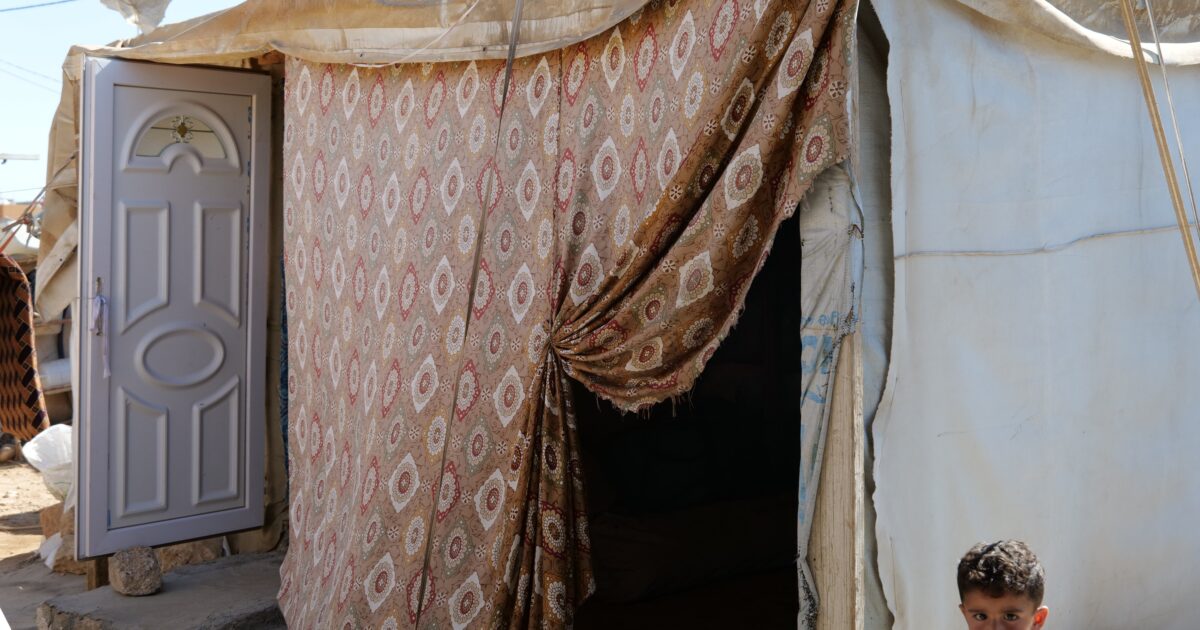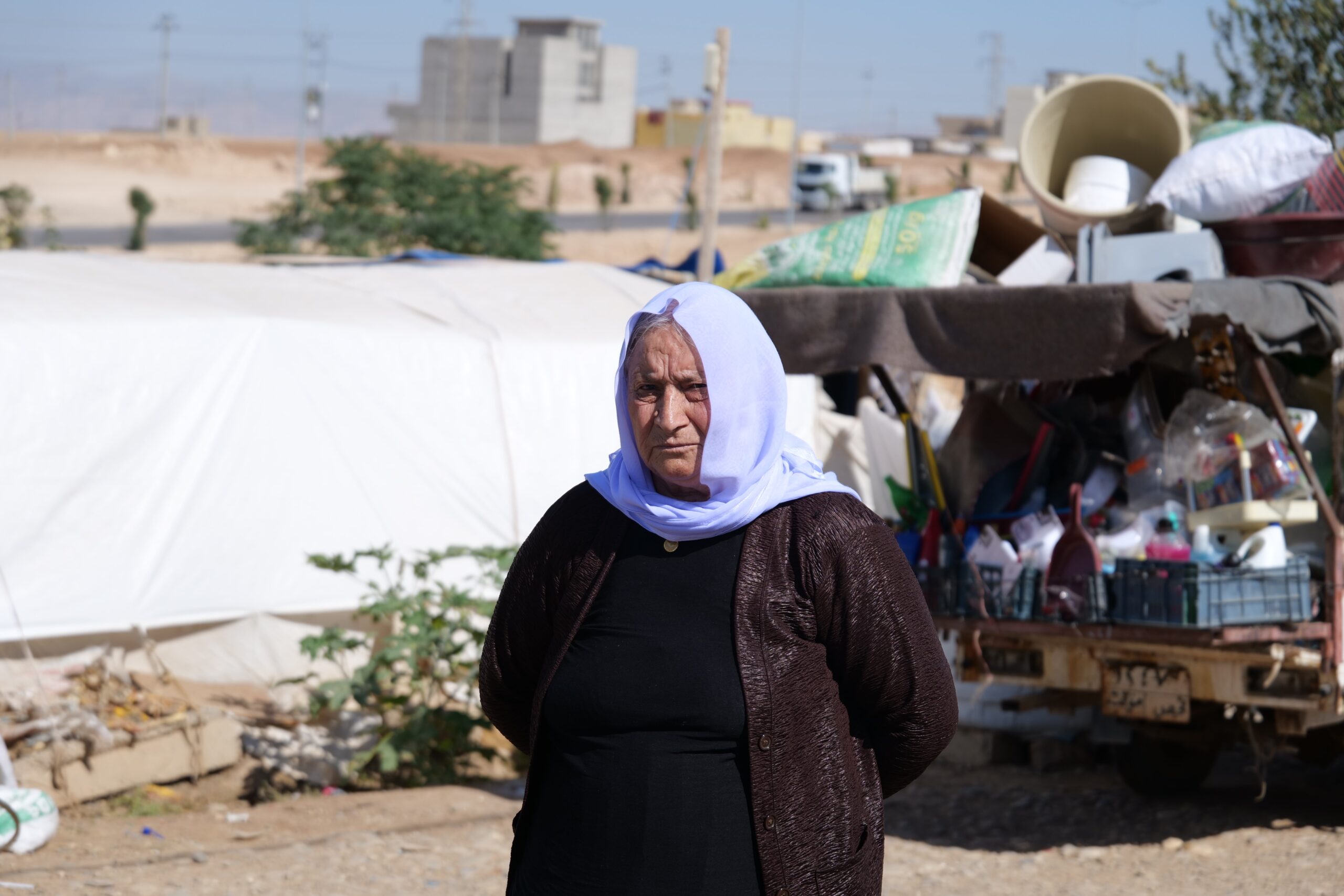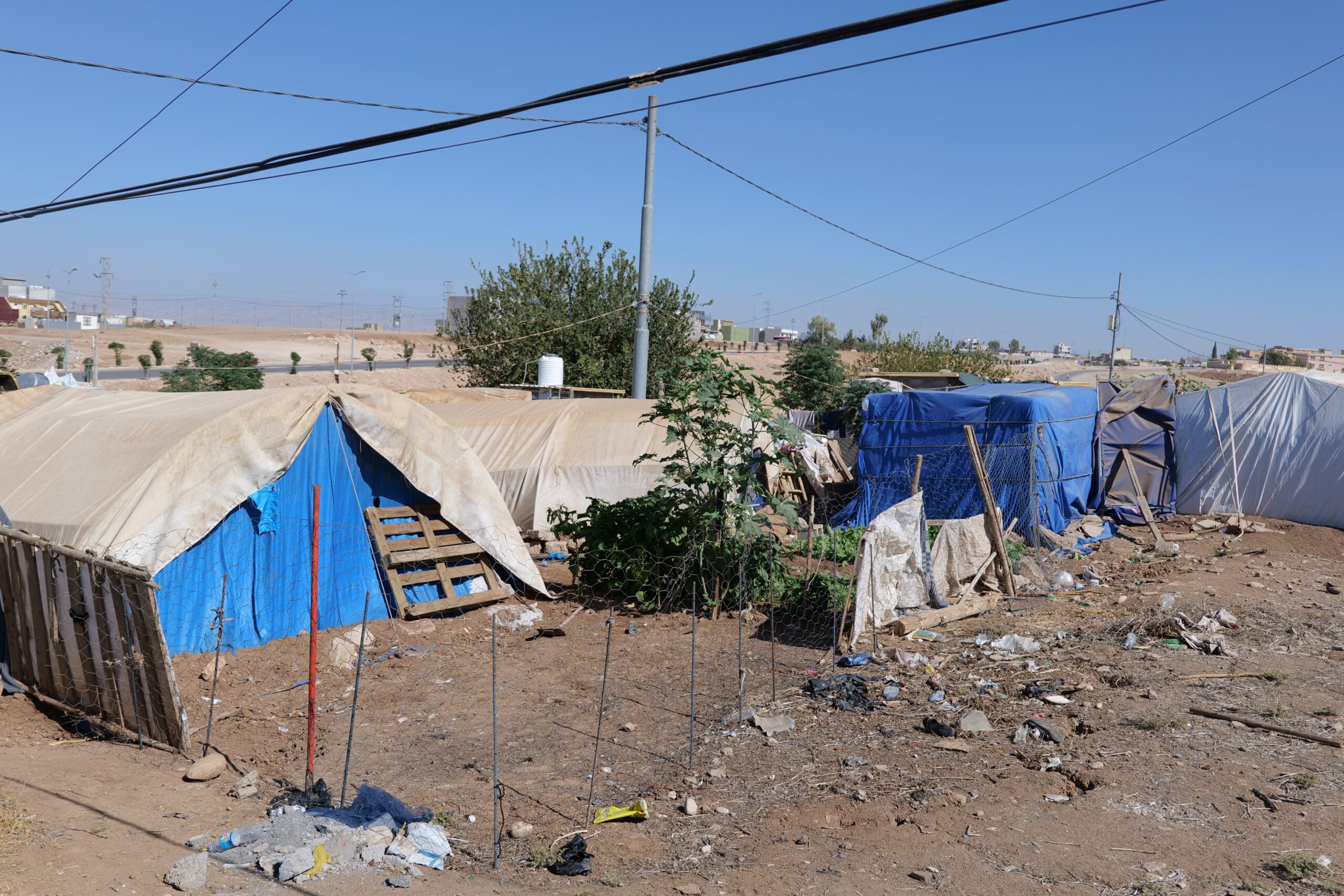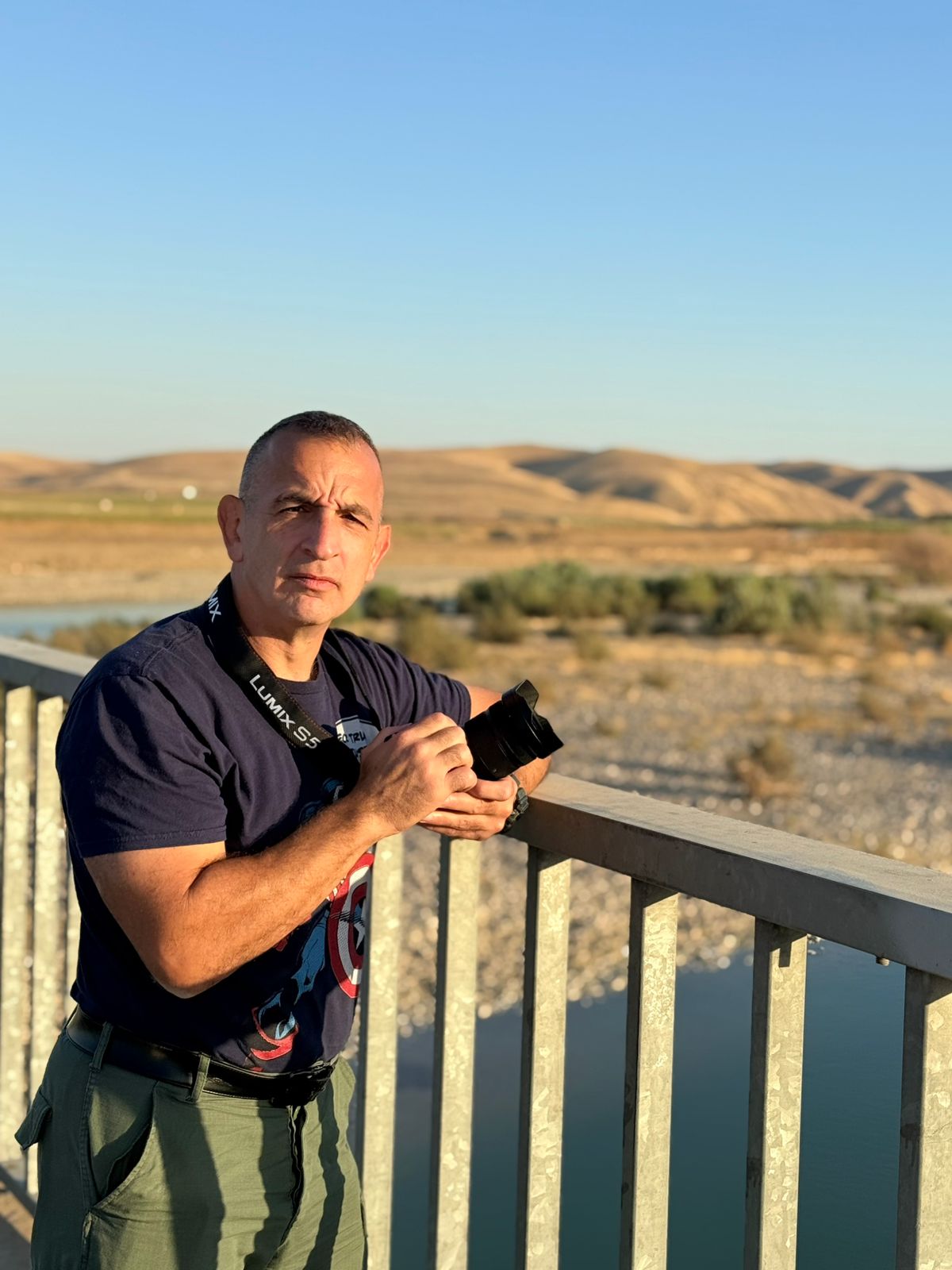

In Duhok, Iraq, the sun beats down on a sandy, stony landscape dotted with makeshift homes built from shipping containers, concrete blocks, and plastic tarps. Carpets serve as doors, and each cluster of shelters shares a single outhouse. With no running water, limited electricity, and rare rainfall, securing water is a daily struggle. The camps lack heating and air-conditioning, leaving families to endure summers that soar to 45°C (113°F) and winters that fall below freezing.
Life here is harsh and unchanging. For more than a decade, families have lived in these conditions, never knowing if they will be able to return home.
Most of the people living here are Yazidis, an ancient ethnoreligious minority native to northern Iraq and nearby regions. They are Kurdish-speaking, endogamous, and follow Yazidism, a monotheistic faith venerating one God and a heptad of angels, chief among them Tawûsî Melek, the Peacock Angel. Their beliefs have long been misrepresented, fueling centuries of persecution. The spiritual center of Yazidism is Lalish, in the Nineveh Plains, which are also the historic heartland of Iraq’s Christian population.
On June 10, 2014, ISIS seized Mosul and rapidly overran much of Ninewa, Salah al-Din, and Anbar, at its peak controlling about 40 percent of Iraq and a third of Syria. The group established its core caliphate across Iraq and Syria, with Mosul and Raqqa, in the Kurdish autonomous region of Rojava, Syria, serving as twin capitals.
In August 2014, ISIS carried out a genocidal campaign against the Yazidis in Sinjar, killing more than 5,000 and abducting thousands of women and children. Tens of thousands fled north to Duhok, about two to three hours from Sinjar and just 40 kilometers from Mosul, where they found relative safety.

From 2017 to 2019, under President Trump, the U.S.-led campaign intensified with expanded authorities and decisive city-by-city offensives. Mosul was liberated in July 2017, Raqqa in October, and by December 2017, Iraq declared ISIS territorially defeated. The final ISIS stronghold at Baghuz, Syria, fell in March 2019, marking the collapse of the caliphate’s urban control.
When ISIS overran Sinjar in August 2014, tens of thousands of Yazidis fled north toward Mount Sinjar and then into the Kurdistan Region of Iraq, concentrating in Duhok Governorate. Duhok sits in the far north of Iraq near the Turkish and Syrian borders, within striking distance of Mosul, the former ISIS capital, and roughly 140 to 175 kilometers from Sinjar.
Its relative safety under Kurdish Regional Government control and proximity to the Yazidi homeland made it the natural refuge for those escaping the massacre.
Historically, between 350,000 and 400,000 Yazidis were driven from their homes in Sinjar and surrounding areas during the ISIS offensive. As of 2025, about 200,000 remain displaced, with most living in Duhok’s camps or informal settlements. An additional 2,500 Yazidis are still missing, many presumed killed or enslaved. Across the Kurdistan Region, roughly 102,000 displaced people of all backgrounds continue to live in 20 formal IDP camps, and Duhok hosts the largest share, predominantly Yazidis.
I visited several of these camps near Duhok, where one alone shelters about 20,000 residents, and there are around 14 camps in the area. An aid worker running a school for displaced children told me that every family there has lived in the camp since 2014, and many of the children were born in displacement. Those born before arriving are often orphans or missing a parent, their families torn apart by ISIS’s genocidal campaign.
Witnessing firsthand the continued suffering of the displaced, one can’t help but reflect on what a failure President Obama was in foreign policy. For more than two and a half years, he allowed ISIS to rise and carve out its caliphate across Iraq and Syria, slaughtering Muslims, Christians, and Yazidis alike. Under his watch, ISIS seized vast territories, including Mosul and Raqqa, while the world stood by.
By contrast, President Trump, shortly after taking office, launched a decisive campaign that quickly reversed ISIS’s territorial gains. From 2017 to 2019, the offensive accelerated: Mosul was liberated in July 2017, Raqqa in October, and by December 2017, Iraq declared ISIS territorially defeated.
The final ISIS stronghold at Baghuz, Syria, fell on March 23, 2019. Trump’s approach, marked by expanded military authority and aggressive city-by-city operations, collapsed ISIS’s urban control in record time.
In addition to the devastation inflicted on the Yazidis, ISIS also left a permanent scar on Iraq’s Christian population. During the group’s advance across the Nineveh Plains, Christians fled to the sanctuary towns of Alqosh and Erbil, the capital of Kurdistan, where local Christian communities and churches sheltered them. The Peshmerga (Kurdish forces), along with the Christian Nineveh Plains Protection Units (NPU), defended these areas from ISIS incursions.
After ISIS’s defeat, some Christians returned to their homes, but most were too afraid to go back to Mosul. As one Christian told me, “Although not every Muslim in Mosul was ISIS, the ones who stayed were fine with ISIS, and Christians were scared to live among them.” Consequently, few ever returned. Many emigrated abroad, while others remained in Erbil, particularly in Ankawa, a large Christian neighborhood.
For nearly two millennia, the Nineveh Plains have been home to Assyrian, Chaldean, and Syriac Christians, descendants of some of the earliest followers of Christ in Mesopotamia. Before ISIS’s rise in 2014, Iraq’s Christian population numbered around 1.4 to 1.5 million, most concentrated in and around the Nineveh Plains. After ISIS’s campaign of genocide and forced displacement, that number fell sharply; today only 150,000 to 200,000 Christians remain.

The post Exclusive: Obama’s ISIS Blunder, Hundreds of Thousands Still Displaced in Iraq appeared first on The Gateway Pundit.

